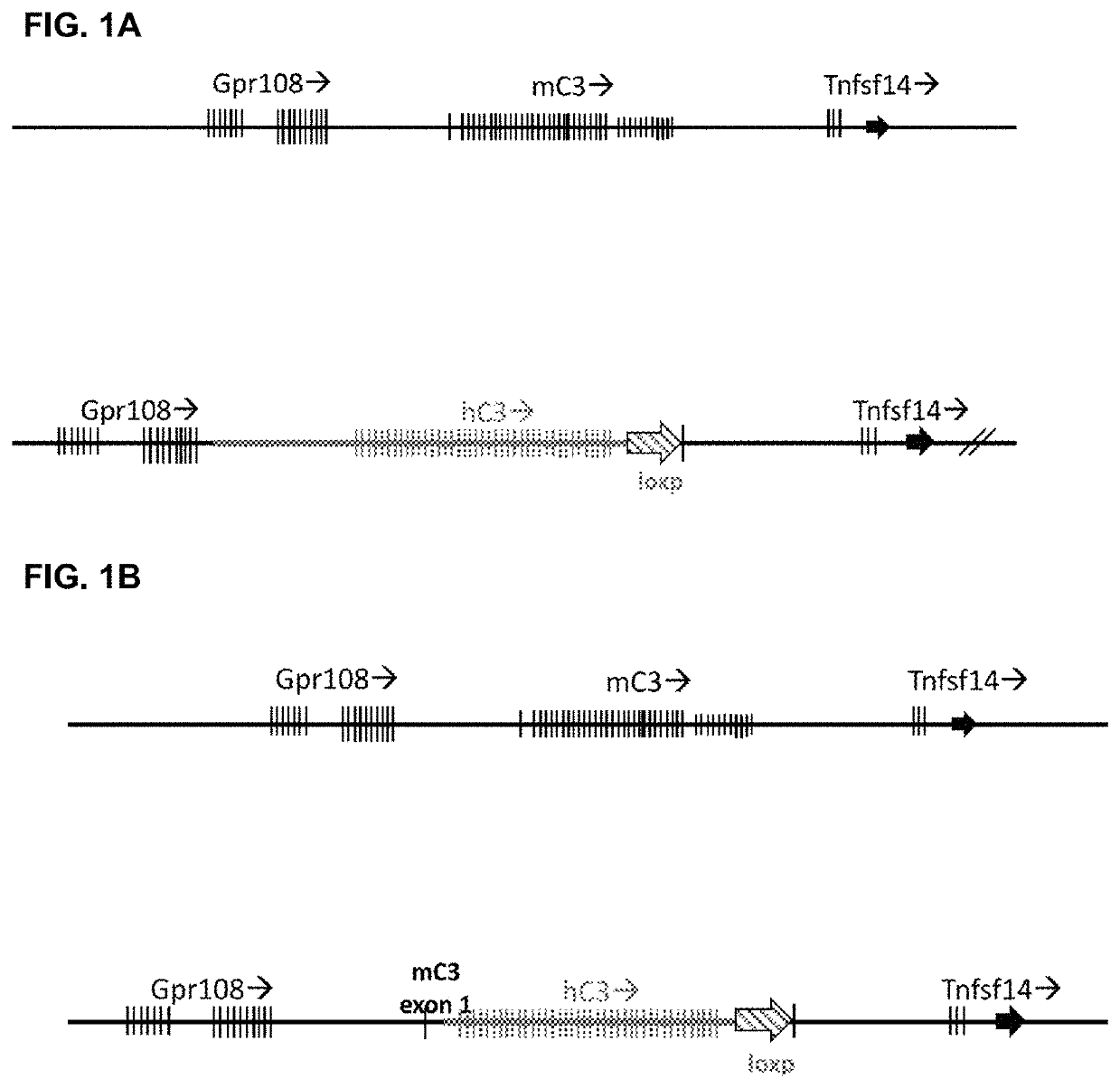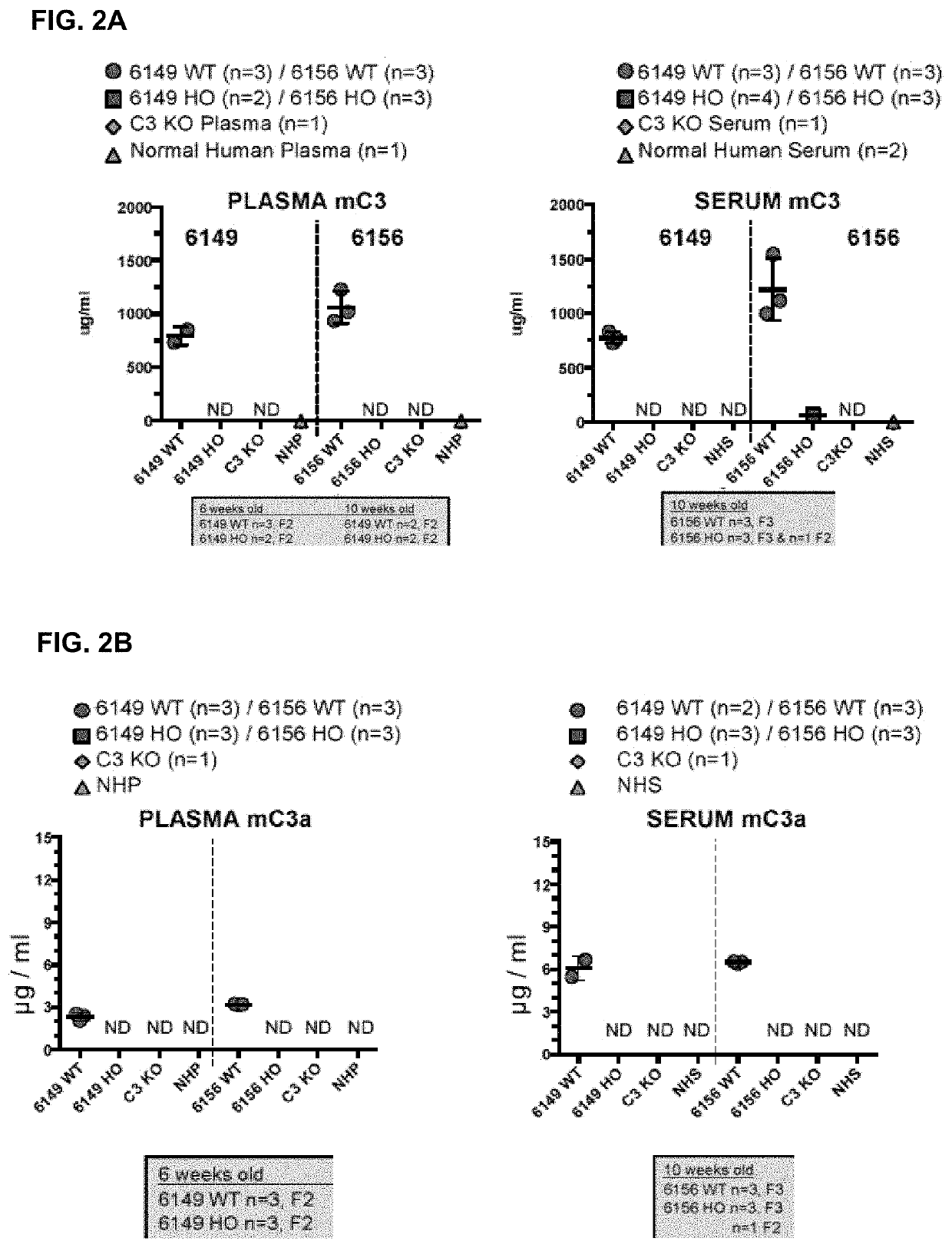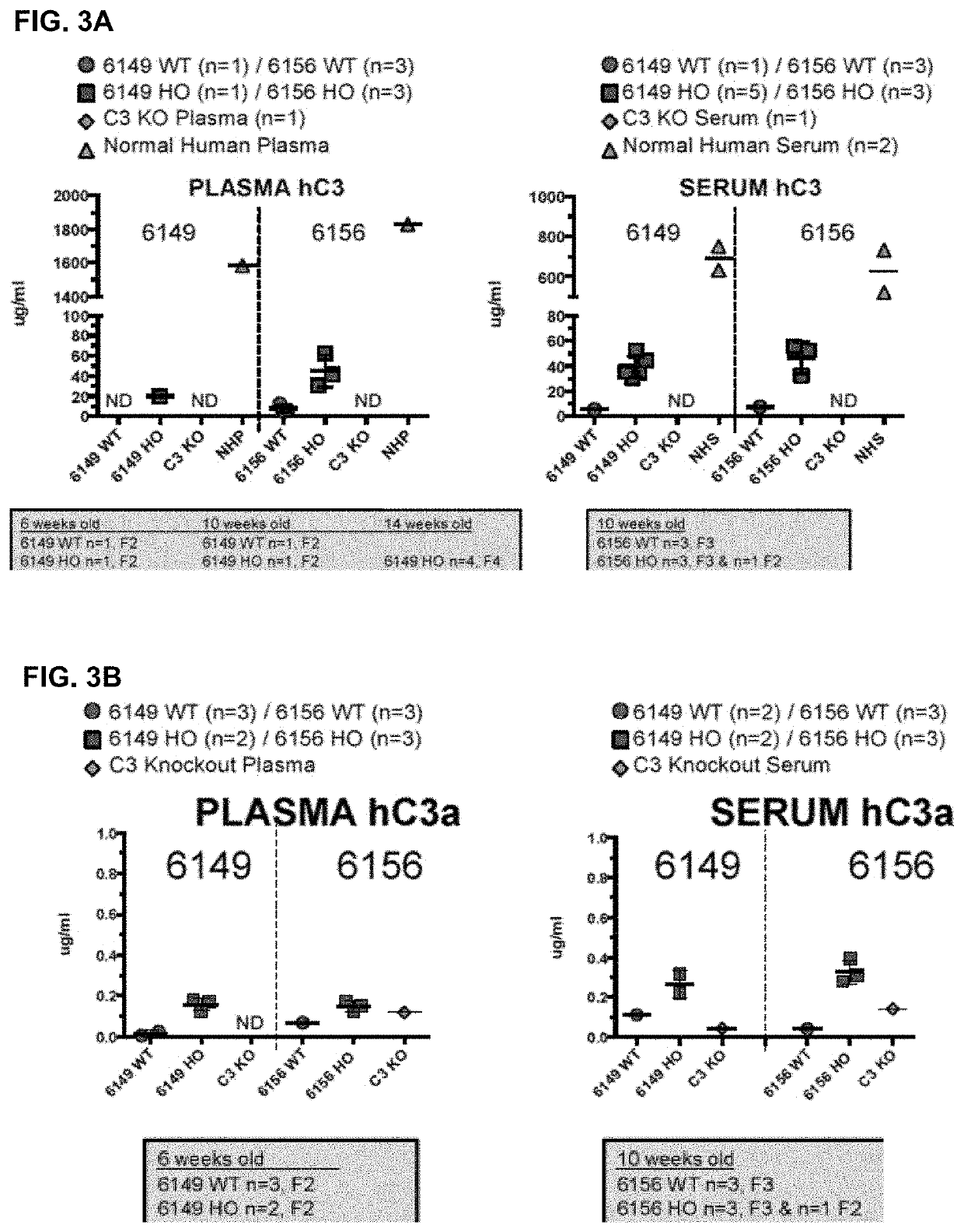Humanized model of kidney and liver disorders
a humanized model and kidney technology, applied in the field of humanized models of kidney and liver disorders, can solve the problems of pd of such therapeutic molecules not being properly determined, harming and degrading kidney function, etc., and achieves the effects of reducing the concentration of blood urea nitrogen (bun), inhibiting expression, and improving kidney function
- Summary
- Abstract
- Description
- Claims
- Application Information
AI Technical Summary
Benefits of technology
Problems solved by technology
Method used
Image
Examples
example 1
nt of the Endogenous Mouse C3 Gene with a Human C3 Gene
[0155](I) Creation of MAID 6149 HO and MAID 6156 HO Mice.
[0156]MAID 6149 Mice—Replacement with Human C3 Promoter and Coding Exons 1 Through 41:
[0157]The human C3 gene containing 5′ regulatory elements and all of the coding exons 1 through 41 of the human C3 gene replaced the murine C3 gene locus spanning 5′ regulatory elements and all of the coding exons 1 through 41 (FIG. 1A).
[0158]Preliminarily, a targeted deletion of 25 kb of the mouse C3 gene was generated in mouse ES cells by replacement of coding exons 2 through 41 and including 900 bp 3′ to the polyadenylation site with a floxed neo cassette. The resultant mouse ES cells, 12132 ES cells, are a heterozygous C3 knockout. 12132 cells were used to generate C3 knockout mice according to procedures known in the art.
[0159]A targeting construct was generated containing mouse C3 upstream and downstream homology arms flanking a human C3 sequence extending from 5′ regulatory element...
example 2
and Gross Morphology of C3 Humanized Mice
[0175](I) Average Age at Death and Weight of C3 Humanized Mice Versus Wildtype.
[0176]For these experiments, mortality and age of death were acquired from vivarium records. Additionally, weights of MAID 6156 homozygous and MAID 6149 homozygous mice were monitored in a cohort of mice. Lastly, lean tissue volume, whole body fat volume and % fat volume were determined as follows: Mice were scanned using in vivo Quantum μCT system (PerkinElmer). The X-ray source was set to a current of 160 μA, voltage of 90 kVp. The mouse was anesthetized by isofluorane, and the whole body, excluding the head, was scanned with a field of view at 60 mm×120 mm. The scan took 34 seconds, with a voxel size at 240 μm. The imaging was analyzed by Analyze software (Mayo Clinic). Bone, fat, and lean tissues were segmented by the grey value, and tissues volumes, fat volume fraction, bone mineral density (BMD) and bone mineral content were calculated.
[0177]Both MAID 6156 ho...
example 3
ization of Kidney and Liver Injury in C3 Humanized Mice
[0182](I) Kidney Histopathology
[0183]In brief, Hematoxylin and Eosin (H&E) stain involves staining with hematoxylin, differentiating with acid alcohol, followed by staining with eosin. Periodic acid-Schiff (PAS) staining of the kidney sections was executed using a commercial vendor (Histoserv Inc.). In brief, 5-micron thin sections were made from formalin-fixed, paraffin-embedded mouse kidney tissues along the sagittal plane to include all the anatomical regions of the kidney. The section were deparaffinized and stained with PAS to detect glycoproteins, glycolipids and mucins in the tissue. Quantitative determination of mesangial matrix expansion in PAS-stained sections was performed as follows. In brief, PAS-stained sections were imaged in an Aperio AT2 Slide Scanner with the 40× objective. For measurements of mesangial cell matrix expansion, at least 25 glomeruli per section were subjected to measurement of PAS-positive area. ...
PUM
| Property | Measurement | Unit |
|---|---|---|
| concentration | aaaaa | aaaaa |
| concentration | aaaaa | aaaaa |
| concentration | aaaaa | aaaaa |
Abstract
Description
Claims
Application Information
 Login to View More
Login to View More - R&D
- Intellectual Property
- Life Sciences
- Materials
- Tech Scout
- Unparalleled Data Quality
- Higher Quality Content
- 60% Fewer Hallucinations
Browse by: Latest US Patents, China's latest patents, Technical Efficacy Thesaurus, Application Domain, Technology Topic, Popular Technical Reports.
© 2025 PatSnap. All rights reserved.Legal|Privacy policy|Modern Slavery Act Transparency Statement|Sitemap|About US| Contact US: help@patsnap.com



